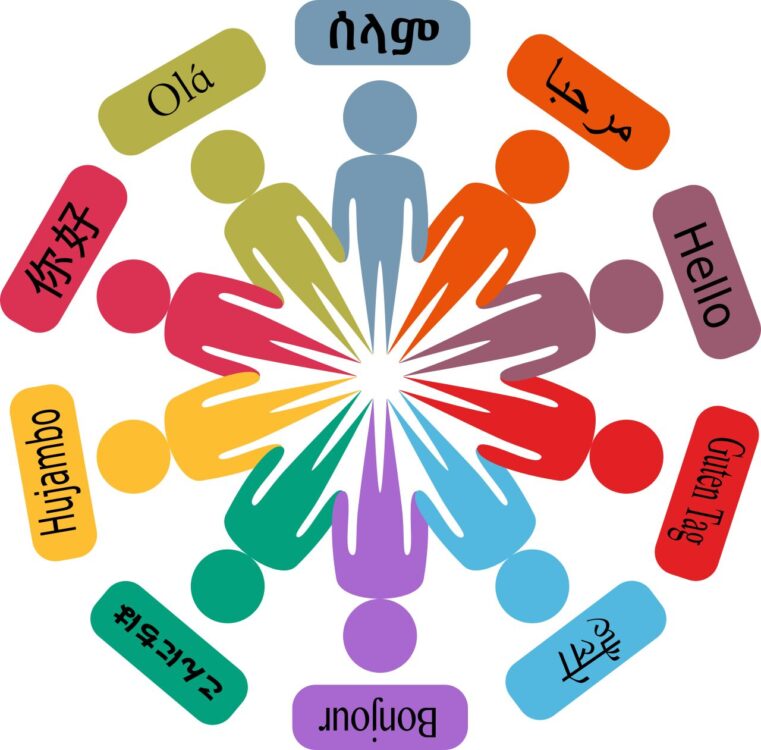With 574 recognized tribes in the United States alone, the Indigenous people of North America have a diverse population, diverse culture, and a diversity of languages. At the turn of the twenty-first century, there were approximately 210 Native American languages still spoken in North America, according to linguist Michael Krauss in his paper “Status of Native American Language Endangerment.” With such a large swath of languages, one may expect to have met at least a few speakers in their lifetime, but this is seldom the case.
This raises the question — why are Native American languages so rare when they are so numerous? The obvious answer is the fact that the U.S. Indigenous population is tiny, making up approximately one percent of the general population, due in no small part to colonization and genocide, but the truth stretches yet further.
Indeed, following Christopher Columbus’ landing in the Caribbean, the local Arawak people perished under subjugation and disease, taking with them their languages. In many other cases, an imperialist regime would attempt to “civilize” native people by forcing them to learn the ruling class’ language.
In the United States, this philosophy took the form of the infamous American Indian residential schools. Under the onus that “no unity or community of feeling can be established among different peoples unless they are brought to speak the same language,” the Department of the Interior Bureau of Indian Affairs forced Native American children from their homes and into boarding schools, where they were brutally assimilated into “American” civilization.
Indigenous children who attempted to hold on to their tribal languages were abused and publicly humiliated; children found speaking their native tongue were beaten by teachers and ostracized by peers to avoid the same fate, forcing these children to hide their true cultural identities. As bilingualism scholar and educator James Crawford points out, due to this systematic torture, many victims of these schools became reluctant to teach their children their languages, remembering the horrors and shame of the boarding schools, even decades after they were closed.
This loss of learning has had cascading effects, members of the Arikara Language Project explain. While larger tribes like the Navajo Nation retained a stable population of speakers, ones like the Arikara of the Three Affiliated Tribes and the Dakota lost generations of learners, with younger generations moving away from the reservations without learning languages from their elders.
To describe this phenomenon, Krauss, in that same paper, devised a scale to describe the “viability” of Indigenous languages. Category A languages, such as Navajo and Central Yupik, are those languages still taught to the current generation of children in the traditional manner for the area. Category B and C languages are those only known and utilized by the parents and grandparents of the current generation, respectively. Category D languages are those spoken only by the advanced elderly, and Category E languages are “moribund,” facing imminent extinction. Today, over 70 percent of North American Indigenous languages are Category C or D, with that number growing larger by the decade.
Today, the number of spoken Native American languages hovers around 150, lessening by the decade, clinging to a dedicated speaker base of tribal elders keeping the flame of their culture alive.
Today, the number of spoken Native American languages hovers around 150, lessening by the decade, clinging to a dedicated speaker base of tribal elders keeping the flame of their culture alive. In response, several tribes have started revitalization programs, bringing these elders to schools in an attempt to propagate their local languages. However, as these elders become unable to continue teaching due to advancing age, qualified educators become increasingly difficult to find. Written records, no matter how well-made, can never supplant the traditional methods of oral teaching. Thus, the loss of these elders would spell the end of the language.
What is more, this fate is not unique to Native Americans — over half the world’s 6000 languages are Category B or higher.
What is more, this fate is not unique to Native Americans — over half the world’s 6000 languages are Category B or higher. As English, Spanish, Chinese, and the few dozen other major world languages grow more dominant, Indigenous peoples all over the world lose their languages. Without drastic action, these languages will be lost by the century’s end.
After surviving 15,000 years on the continent of North America and enduring 500 years of cultural imperialism, nearly 150 languages now face extinction due to the crimes of generations long since passed. The diverse languages that once populated the continent may fall permanently silent.
Sources:
Annual Stabilizing Indigenous Languages Symposium (1999). ERIC Number: ED428928
Bilingual Research Journal (1995). DOI: 10.1080/15235882.1995.10668589
Language, Culture, and Curriculum (2008). DOI: 10.1080/07908310802385881
Language Policy (2012). DOI: 10.1007/s10993-012-9248-5
Stabilizing Indigenous Languages (1996). Corpus ID: 150481265
Image courtesy of Openclipart


